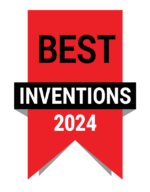Emerging Contaminants with a Focus on Treatability Studies for PFAS and 1,4-Dioxane
In this webinar we were pleased to have as special guests speaker Ryan Thomas, PhD, Associate and Emerging Contaminants Practice Leader and Sophia Dore, PhD, Associate and Director of the Innovative Technology Group at GHD. Their presentation discussed emerging contaminants with a focus on treatability studies for PFAS and 1,4-Dioxane.
This free webinar will:
-
- Provide a general overview of emerging contaminants
- Identify the regulations in the various states
- Overview available analytical methods and treatment technologies
- Offer proactive considerations related to addressing PFAS and 1,4-Dioxane concerns
- Provide an overview of the application of laboratory studies to study treatment of PFAS and 1,4-Dioxane
- Provide case studies where treatability studies were used to understand and model treatment of PFAS and 1,4-Dioxane
Emerging Contaminants consist of synthetic or naturally occurring chemicals or microorganisms that are not routinely monitored in the environment but have the potential to impact sensitive receptors such as drinking water sources and other water sources and potentially cause negative human health and/or ecological effects. These contaminants are increasingly being detected in water, soil, landfill leachate, and other media. As a result of emerging contaminants being detected in the environment, evaluations to determine the need for regulation are routinely performed that may impact many water and environmental professionals. Of the numerous potential emerging contaminants, per- and polyfluoroalkyl substances (PFAS) and 1,4-dioxane are consistently being evaluated for stringent regulation at the Federal and State levels.Treatability studies model processes occurring in the environment or in treatment plants at a small scale. They are particularly well suited to emerging contaminants because procedures and doses for treatment are not well established and the ability to test multiple doses/retention times or other treatment parameters within a short period of time to determine the optimum treatment is an advantage.

 Americas
Americas Europe
Europe Français
Français Deutsch
Deutsch Italiano
Italiano Español
Español



